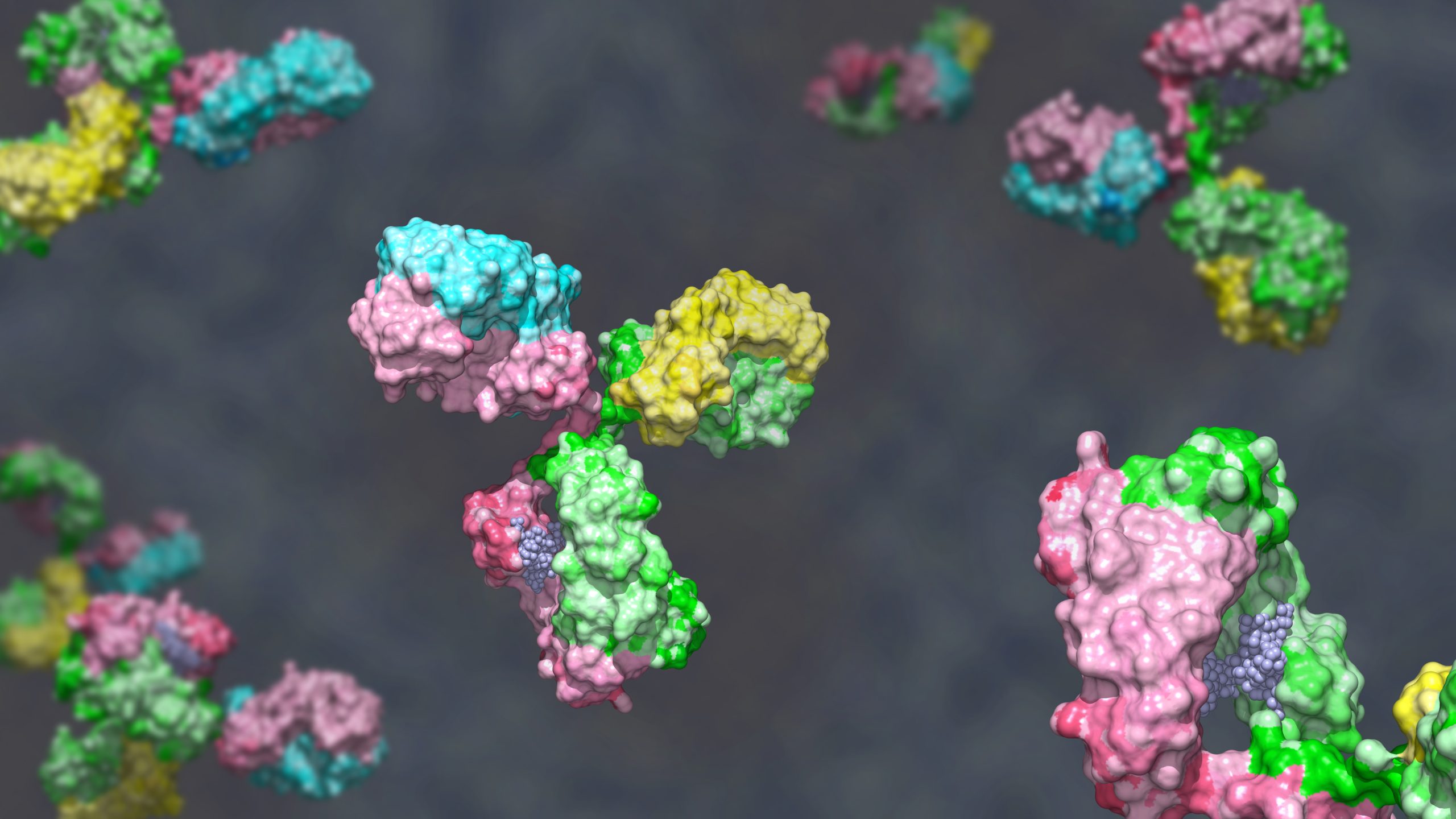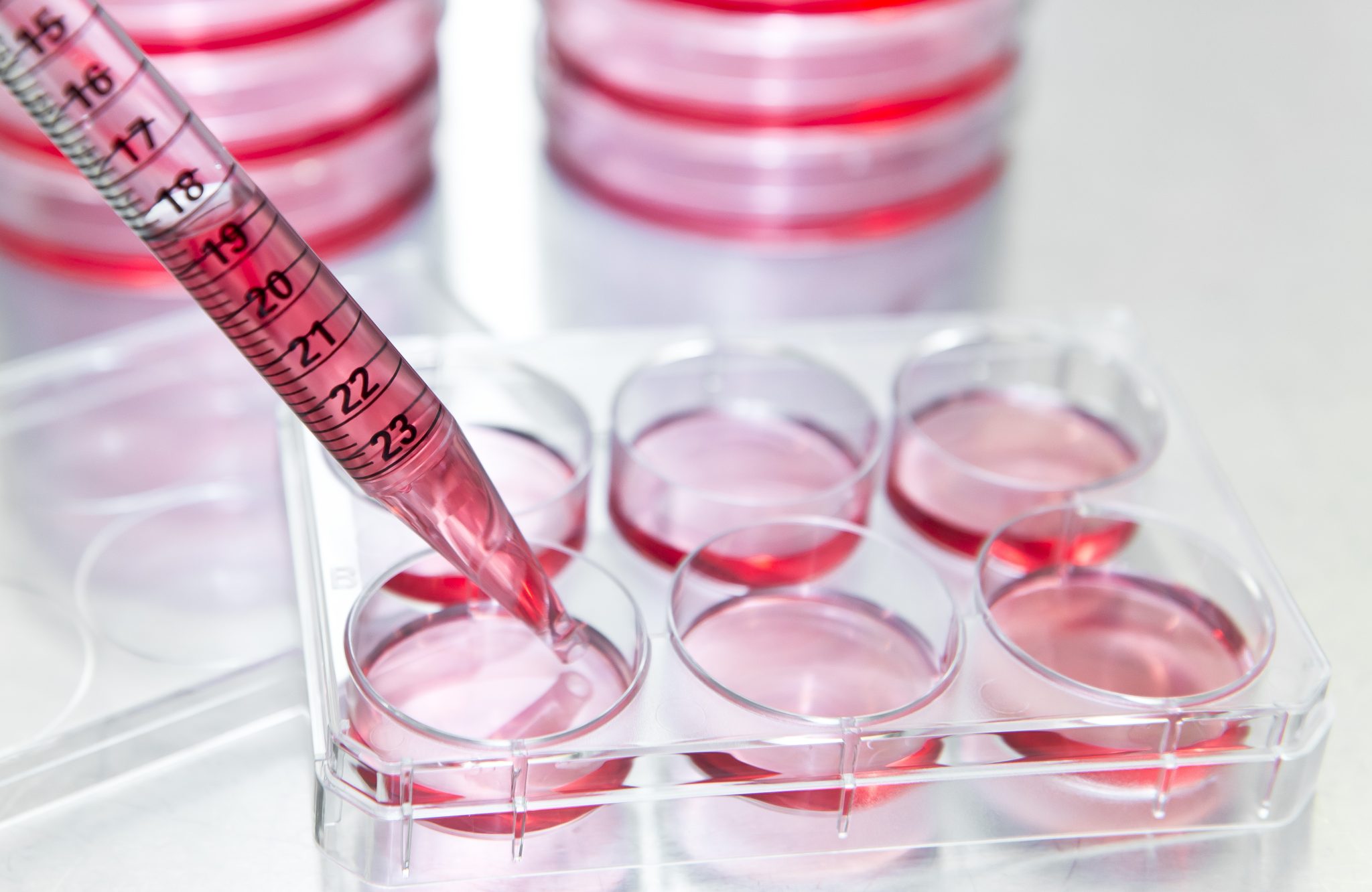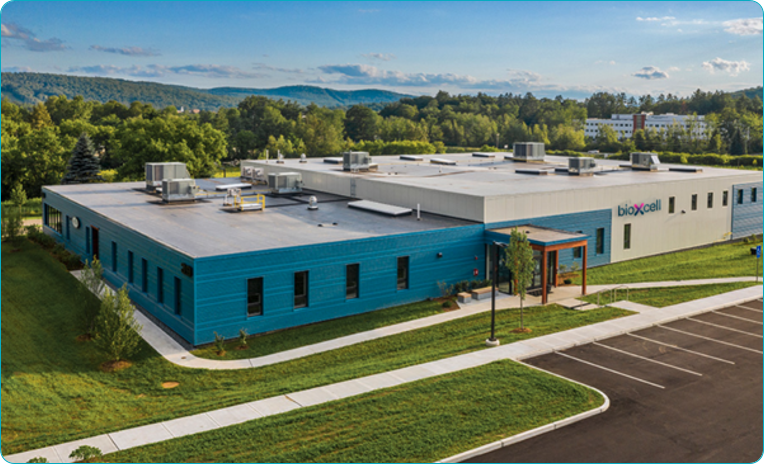By including isotype controls in their in vitro and in vivo antibody-based assays, scientists gain confidence in the accuracy of their experimental conclusions.
Bio X Cell and The Scientist

Distinguishing true antibody-antigen interactions from non-specific ones is a common challenge for researchers performing in vitro and in vivo antibody-based experiments. ©STOCK.ADOBE.COM, Dr_Microbe
Therapeutic antibodies or immunoglobulins are becoming increasingly popular due to their targeted approach to treating various diseases, including cancer, autoimmune disorders, and infectious diseases. These large, Y-shaped proteins consist of two identical light chains and two identical heavy chains.1 Scientists group these molecules into five major classes or isotypes-IgA, IgG, IgD, IgE, and IgM-according to the type of heavy chain they possess, where different isotypes vary in their function and localization within the body.2 As cancer therapeutics, clinicians often use antibodies to target tumor antigens, such as those important for the cancer's growth, survival, or invasiveness.3 These antibodies can activate immune cells, interfere with key signaling pathways, or trigger the complement cascade, ultimately leading to cancer cell death.
Beyond their therapeutic applications, researchers widely use antibodies for both in vitro and in vivo studies. They can employ these proteins to block, neutralize, deplete, or activate cells. Additionally, many experimental protocols, such as flow cytometry, immunohistochemistry, western blotting, immunofluorescence, and enzyme-linked immunosorbent assays, rely on immunoglobulins to detect, identify, and quantify specific macromolecules, including proteins, lipids, and polysaccharides.
The Importance of Isotype Controls
Scientists require appropriate controls for their antibody-based experiments and therapeutic antibody testing to ensure reliable and accurate results.4 To fulfill this need, many researchers use isotype control antibodies as negative controls in their assays. These control immunoglobulins must share key characteristics with the chosen primary antibody, including the host species, isotype, and subclass, but should not cross-react with the target antigen. As a result, isotype controls allow scientists to overcome various challenges encountered when performing in vitro and in vivo antibody-based assays.
Background signal, which can result from off-target immunoglobulin binding, is a common problem in experiments involving antibodies.4 If not properly accounted for, scientists can misinterpret this staining as the real signal from antigen-specific binding, leading to inaccurate experimental conclusions. Isotype controls help differentiate between non-specific and specific primary antibody staining by providing a baseline measurement of the background signal.
Animals treated with antibodies may undergo biological or phenotypic changes because of interactions between the antibodies and Fc receptor-positive cells, such as B cells, macrophages, neutrophils, and natural killer cells.4 Because isotype controls will also bind to Fc receptors, researchers can eliminate the effects caused by the antibody's class, subclass, and host species and ensure that the observed changes are a result of true antibody-antigen interactions.
Elevate In Vivo and In Vitro Testing with High-Quality Isotype Controls
To obtain the isotype control antibodies necessary for their experiments, scientists need a reliable and reputable manufacturer that offers high-quality, validated products. Bio X Cell has an extensive selection of isotype controls in their portfolio covering various classes, subclasses, and host species, including mouse IgG1 and IgG2a antibodies, rat IgG1 antibodies, and human IgG4 antibodies. Their optimized antibody manufacturing process enables them to produce exceptional antibody solutions with ultra-low endotoxin levels. Free of preservatives, stabilizers, and carrier proteins, these ultrapure antibodies are ideal for in vivo studies and sensitive cell culture applications.
Bio X Cell provides isotype controls across three distinct product lines. InVivoMAb™ isotype antibodies are specifically matched to Bio X Cell primary antibodies, ensuring optimal consistency for both in vitro and in vivo applications. The InVivoPlus™ isotype controls undergo additional testing compared to the InVivoMAb™ products, including murine pathogen screening and antibody aggregation assessments. This makes these isotype controls ideal for even the most rigorous in vivo experiments. The RecombiMAb™ isotype controls meet the same high standards as the InVivoPlus™ products and offer mouse or human IgG constant regions instead of rat or hamster, with select mutations to reduce Fc-mediated effector functions. This ensures better-matched isotype controls, minimizing variability in experimental results. By employing Bio X Cell's high-quality isotype control antibodies, researchers can improve the accuracy and reliability of their antibody-based experiments and therapeutic antibody testing.
References
- Chiu ML, et al. Antibody structure and function: The basis for engineering therapeutics. Antibodies. 2019;8(4):55.
- Janeway CA Jr, et al. The distribution and functions of immunoglobulin isotypes. In: Immunobiology: The Immune System in Health and Disease. 5th Edition. Garland Science; 2001.
- Vukovic N, et al. Isotype selection for antibody-based cancer therapy. Clin Exp Immunol. 2021;203(3):351-365.
- Hulspas R, et al. Considerations for the control of background fluorescence in clinical flow cytometry. Cytom Part B. 2009;76B(6):355-364.



